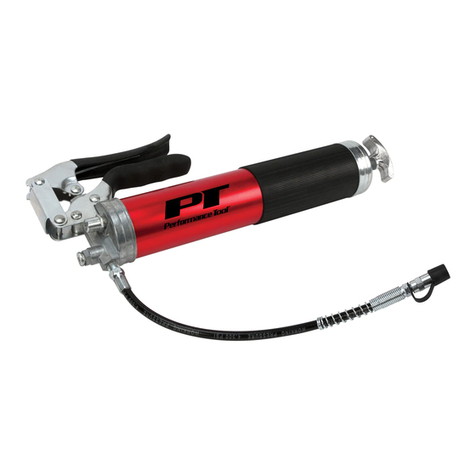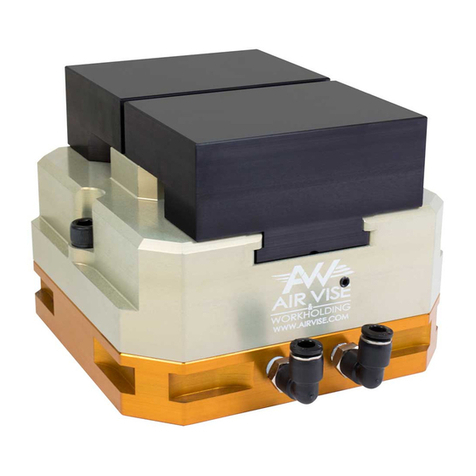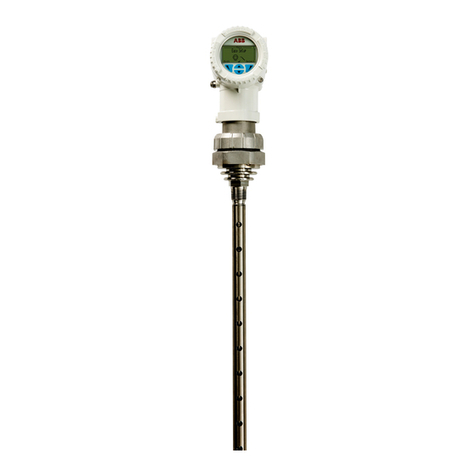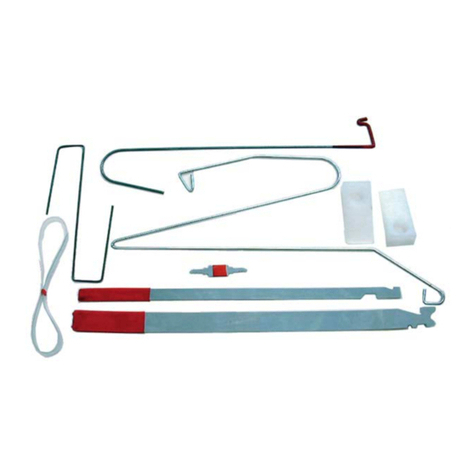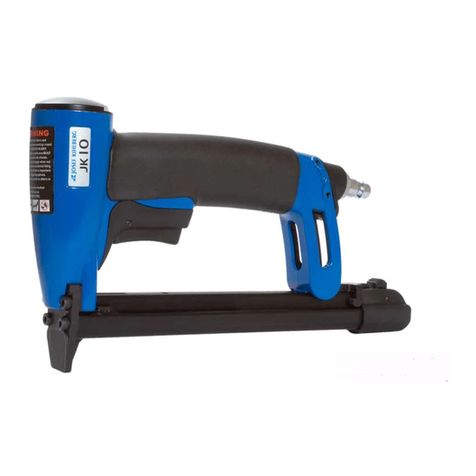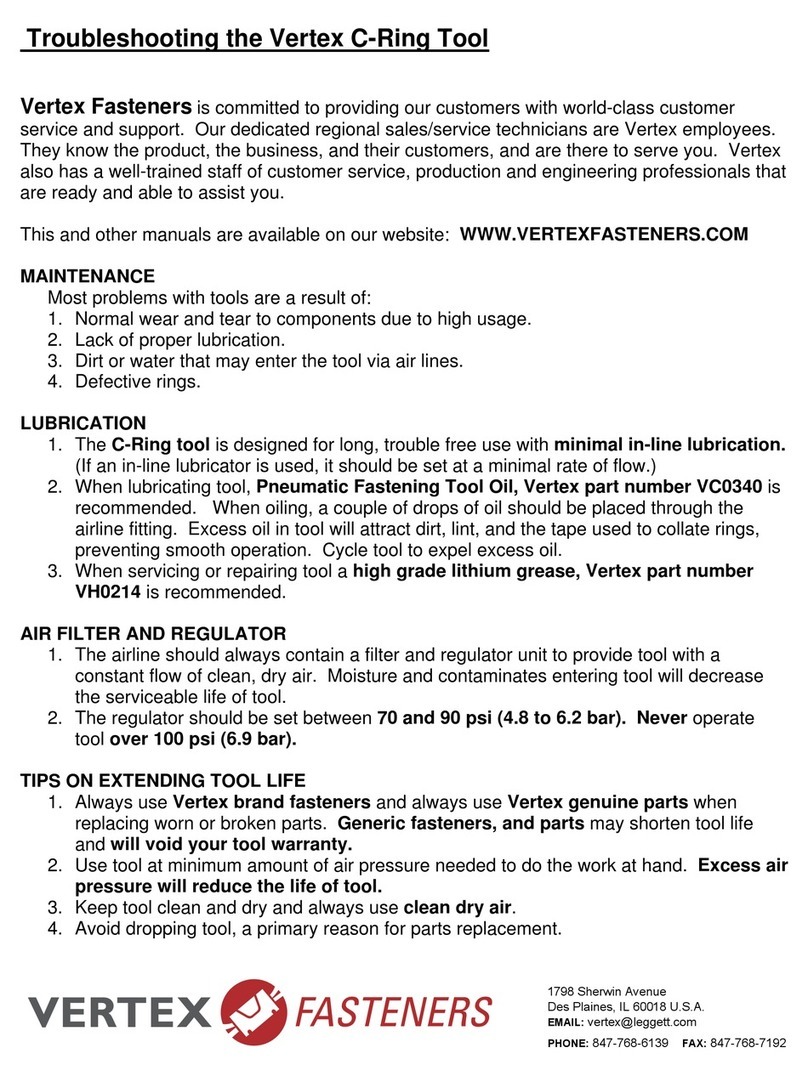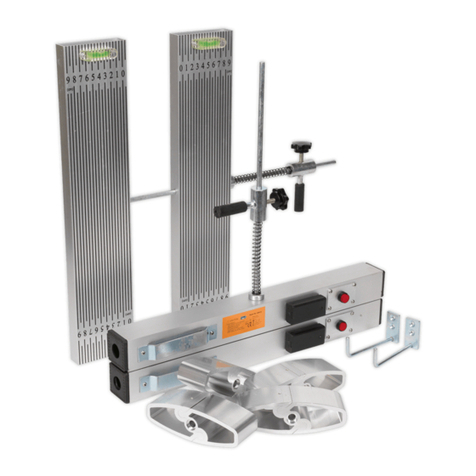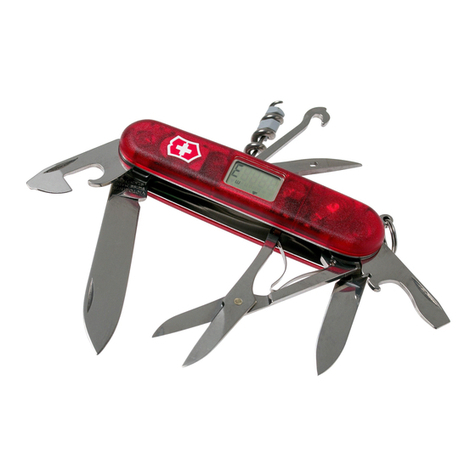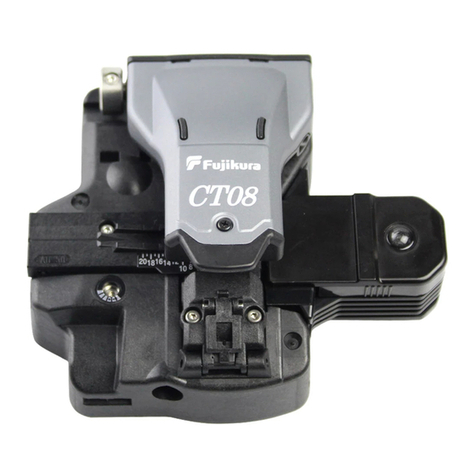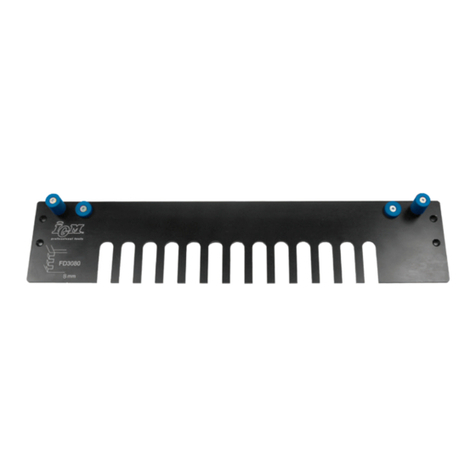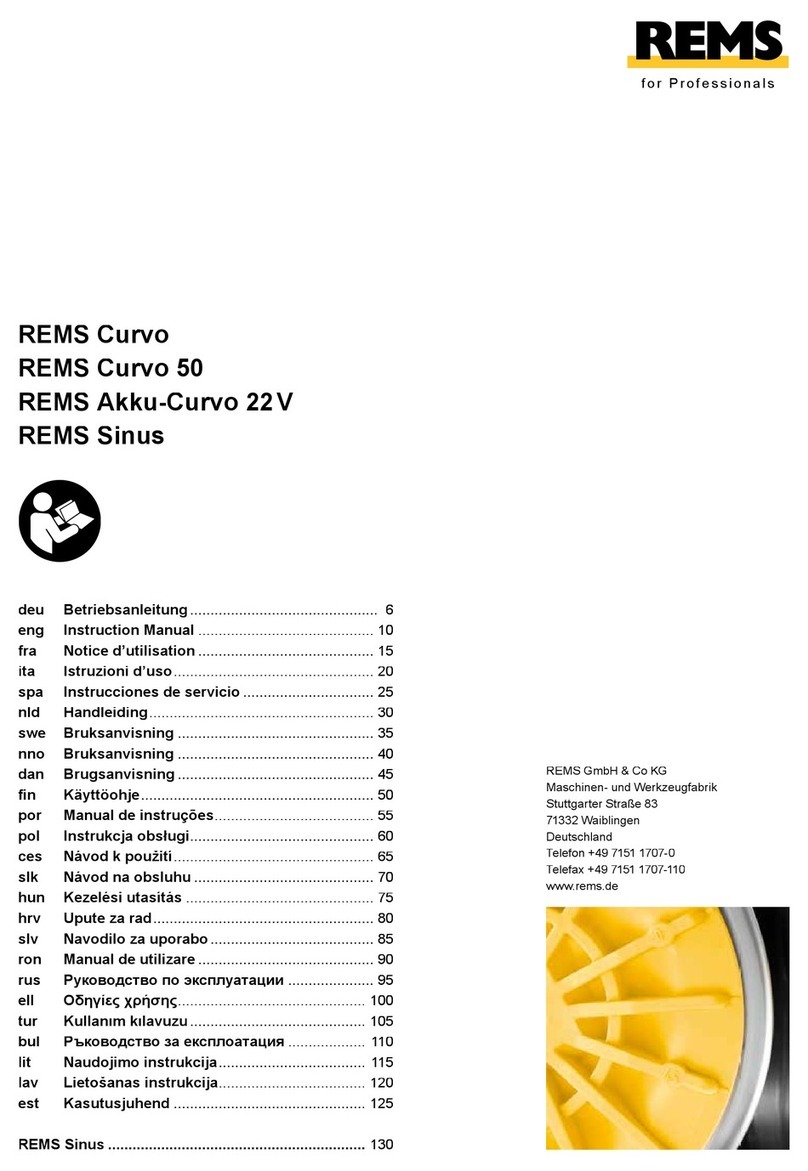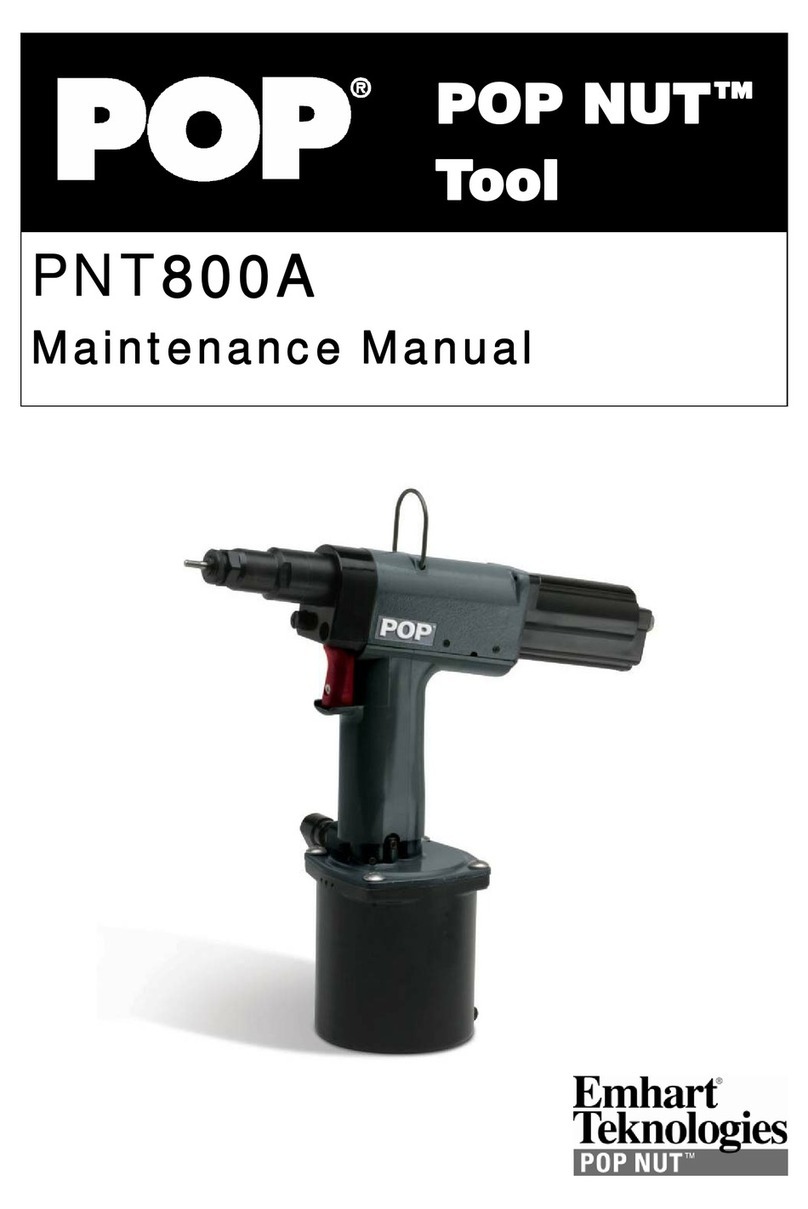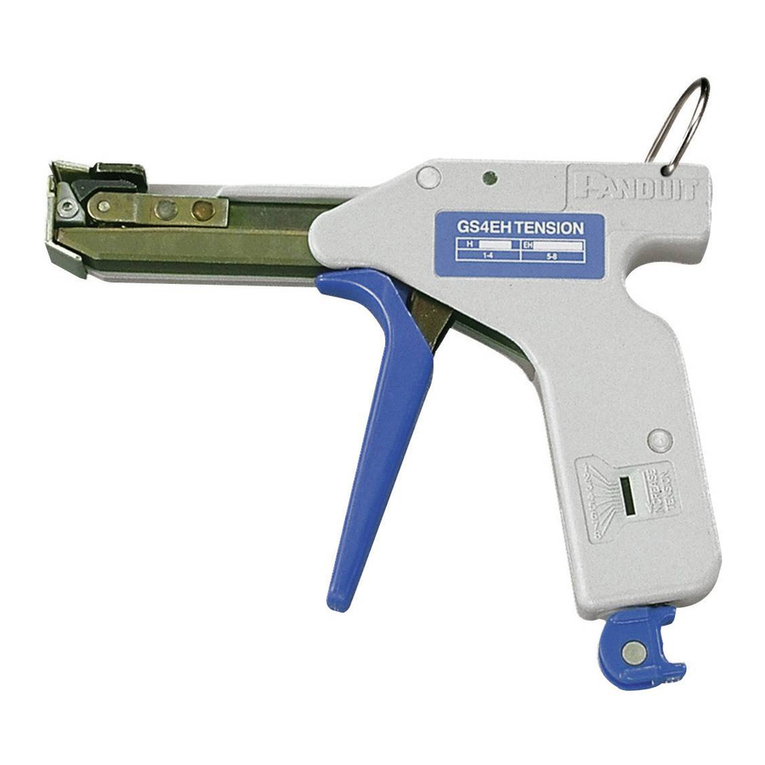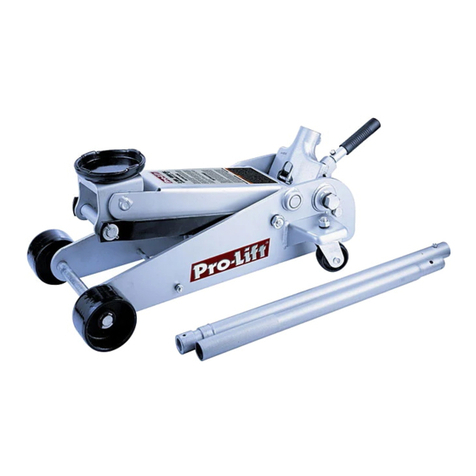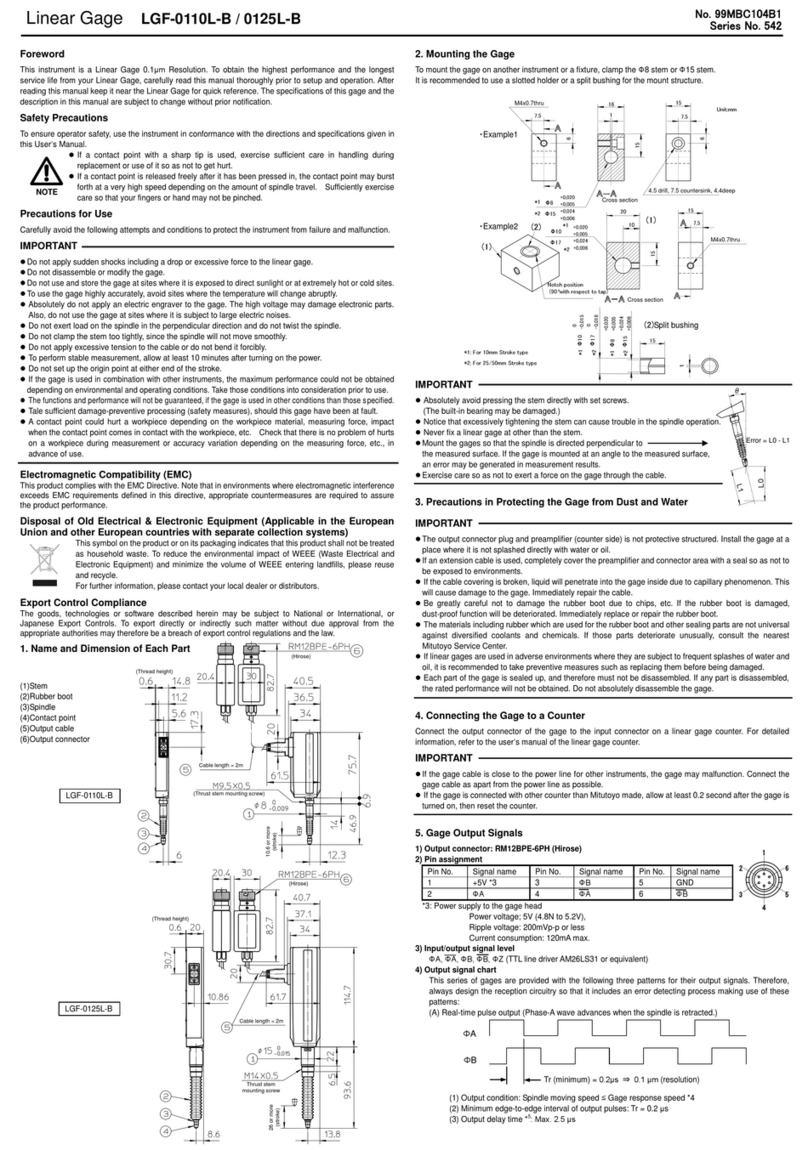FK-Lightplanes FK 12 S2 Comet User manual

Airplane Manual
FK 12 S2 Comet
Certified as LSA or Ultralight according
BFU 95 / LTF-UL 2003
Kennblatt Nr. 61158.4
This manual must be carried in the
aircraft at all times.
Serial Nr.: _____
This is the Pilot’s operating manual and
approved flight manual.
Manual Nr.:
12 S2-____-__E
Manufacturer: FK-Lightplanes Krosno –Poland
Design Organisation and Holder on Product Rights:
B&F Technik Vertiebs GmbH Speyer - Germany

Airplane Manual FK 12 S2
FK Lightplanes
Revision FE
Section 0
page 0-1
No part of this manual may be reproduced or changed in any manner without
written agreement of the aircraft manual department.
Design Organisation, Holder on Product Rights and customer support:
B&F Technik Vertiebs GmbH Speyer –Germany
Anton-Dengler-Str. 8
D-67346 Speyer
Tel.: +49 (0) 6232 –72076
Fax: +49 (0) 6232 –72078
email: [email protected]
homepage: www.fk-servicecenter.com
Important service informations / bulletins can be obtained from our website.
Check our website regularly as automatic update by mail is not assured.
FK Lightplanes
REVISIONS
The following table contains a list of valid pages. This table will be updated
with every revision. The pilot is responsible for keeping all pages of this
manual to the revision status indicated in the table, by exchanging the
relevant pages when a new revision has been published.
For updates check the homepage of FK Lightplanes under www.fk-
lightplanes.com or www.flugservice-speyer.de regularly. New revisions can
be downloaded there. If you do not have an internet connection, revisions
can be ordered from FK Lightplanes.
Revisions and Service Bulletins for the ROTAX engine are available on
www.rotax-aircraft-engines.com .

Airplane Manual FK 12 S2
FK Lightplanes
Revision FE
Section 0
page 0-2
Valid Pages from 1. of December 2016
Page
Revision
Date
Page
Revision
Date
0-1
FE
1.2.13
0-2
1
1.12.16
0-3
FE
1.2.13
0-4
FE
1.2.13
0-5
FE
1.2.13
0-6
FE
1.2.13
0-7
FE
1.2.13
1-1
FE
1.2.13
1-2
FE
1.2.13
1-3
FE
1.2.13
1-4
1
1.12.16
1-5
FE
1.2.13
2-1
1
1.12.16
2-2
1
1.12.16
2-3
1
1.12.16
2-4
1
1.12.16
2-5
FE
1.2.13
2-6
1
1.12.16
3-1
1
1.12.16
3-2
1
1.12.16
3-3
1
1.12.16
4-1
1
1.12.16
4-2
1
1.12.16
4-3
FE
1.2.13
4-4
FE
1.2.13
4-5
1
1.12.16
4-6
1
1.12.16
4-7
1
1.12.16
4-8
1
1.12.16
5-1
1
1.12.16
5-2
1
1.12.16
6-1
FE
1.2.13
6-2
FE
1.2.13
6-3
FE
1.2.13
6-4
FE
1.2.13
7-1
FE
1.2.13
7-2
FE
1.2.13
7-3
FE
1.2.13
7-4
FE
1.2.13
7-5
FE
1.2.13
8-1
FE
1.2.13
8-2
1
1.12.16
8-3
FE
1.2.13
8-4
FE
1.2.13
8-5
FE
1.2.13
8-6
FE
1.2.13
9-1
FE
1.2.13

Airplane Manual FK 12 S2
FK Lightplanes
Revision FE
Section 0
page 0-3
TABLE OF CONTENTS
1. GENERAL ................................................................................. 1-1
1.1. Airplane Three Side View........................................... 1-2
1.2. Technical Data ............................................................ 1-4
1.3. Abbreviations and Terminology................................ 1-4
2. LIMITATIONS............................................................................ 2-1
2.1. General ........................................................................ 2-1
2.2. Airspeed Limitations.................................................. 2-1
2.3. Airspeed Indicator Markings ..................................... 2-1
2.4. Power Plant Limitations............................................. 2-2
2.5. Propeller...................................................................... 2-3
2.6. Weights........................................................................ 2-3
2.7. C.G. Limits................................................................... 2-3
2.8. Maneuvers................................................................... 2-4
2.9. Flight Load Factors .................................................... 2-4
2.10. Kind of Operation ....................................................... 2-4
2.11. Fuel / Oil / Coolant...................................................... 2-5
2.12. Passenger Seating ..................................................... 2-5
2.13. Colour .......................................................................... 2-5
2.14. Electric......................................................................... 2-5

Airplane Manual FK 12 S2
FK Lightplanes
Revision FE
Section 0
page 0-4
2.15. Placards....................................................................... 2-6
3. EMERGENCY PROCEDURES................................................. 3-1
3.1. General ........................................................................ 3-1
3.2. Engine Failure............................................................. 3-1
3.3. Fuel Pressure Low...................................................... 3-1
3.4. Generator Fault........................................................... 3-1
3.5. Glide............................................................................. 3-1
3.6. Emergency Landing ................................................... 3-2
3.7. Strong Vibrations ....................................................... 3-2
3.8. Steering Problems...................................................... 3-2
3.9. Engine / Carburetor Fire ............................................ 3-3
3.10. Fire and Smoke (Elecric)............................................ 3-3
3.11. Stall recovery.............................................................. 3-3
4. NORMAL PROCEDURES ........................................................ 4-1
4.1. General ........................................................................ 4-1
4.2. Regular Inspection ..................................................... 4-1
4.3. Preflight Inspection.................................................... 4-1
4.4. Engine Starting........................................................... 4-4
4.5. Taxi............................................................................... 4-4
4.6. Before Take-off ........................................................... 4-5
4.7. Takeoff......................................................................... 4-5

Airplane Manual FK 12 S2
FK Lightplanes
Revision FE
Section 0
page 0-5
4.8. Climb............................................................................ 4-6
4.9. Cruise........................................................................... 4-6
4.10. Descent........................................................................ 4-6
4.11. Landing........................................................................ 4-7
4.12. Touch and Go.............................................................. 4-8
4.13. After Landing / Parking.............................................. 4-8
5. PERFORMANCE ...................................................................... 5-1
5.1. General ........................................................................ 5-1
5.2. Takeoff Distance......................................................... 5-1
5.3. Cruise Performance ................................................... 5-2
6. WEIGHT AND BALANCE......................................................... 6-1
6.1. General ........................................................................ 6-1
6.2. Basic Empty Weight................................................... 6-1
6.3. Determination of C.G. for the Flight ......................... 6-2
7. SYSTEMS DESCRIPTION........................................................ 7-1
7.1. General ........................................................................ 7-1
7.2. Instrument Panel ........................................................ 7-1
7.3. Rescue system ........................................................... 7-2
7.4. Tyres ............................................................................ 7-3
7.5. Baggage....................................................................... 7-3

Airplane Manual FK 12 S2
FK Lightplanes
Revision FE
Section 0
page 0-6
7.6. Seatbelts and Rudder Pedals.................................... 7-3
7.7. Canopy......................................................................... 7-3
7.8. Engine.......................................................................... 7-3
7.9. Fuel System................................................................. 7-4
7.10. Brakes.......................................................................... 7-4
7.11. Heating and Ventilation.............................................. 7-4
7.12. Electrical System........................................................ 7-4
8. HANDLING, SERVICING AND MAINTENANCE ..................... 8-1
8.1. General ........................................................................ 8-1
8.2. Ground Handling ........................................................ 8-1
8.3. Cleaning....................................................................... 8-1
8.4. General Advice ........................................................... 8-1
8.5. Regular Maintenance and Lubrication Schedule.... 8-2
8.6. Time between Overhaul (TBO).................................. 8-2
8.7. Fuel System Check / Cleaning .................................. 8-2
8.8. Control Surface Angle................................................ 8-4
8.9. Jacking / Towing / Storage ........................................ 8-4
8.10. Main / Subsidiary Structure....................................... 8-4
8.11. Materials for minor repairs........................................ 8-5
8.12. Special Repair and Check Procedures..................... 8-5
8.13. Required Tools ........................................................... 8-5

Airplane Manual FK 12 S2
FK Lightplanes
Revision FE
Section 0
page 0-7
8.14. Weighing...................................................................... 8-5
8.15. Mounting / Maintenance of the Rescue System...... 8-5
8.16. Assembly of the Aircraft............................................ 8-6
9. SUPPLEMENTS........................................................................ 9-1
9.1. General ........................................................................ 9-1
9.2. Engine Manual ............................................................ 9-1
9.3. Rescue System........................................................... 9-1
9.4. Avionics / Special Engine Instruments .................... 9-1

Airplane Manual FK 12 S2
FK Lightplanes
Revision FE
General
page 1-1
1. General
This manual must be read carefully by the owner and operator in order to
become familiar with the operation of the FK 12 Comet. The manual
presents suggestions and recommendations to help obtain safe and
maximum performance without sacrificing economy.
The owner and operator should also be familiar with the applicable aviation
regulations concerning operation and maintenance of this airplane.
All limits, procedures, safety practices, servicing, and maintenance
requirements contained in this manual are considered mandatory for the
continued airworthiness of the airplane.
All values in this manual are based on ICAO Standard Atmosphere
conditions and maximum takeoff weight (MTOW).
The pilot in command has to make sure that the airplane is airworthy and
operated according to this manual.
Non-compliance with handling, maintenance and checking instructions as
indicated in the flight and maintenance manuals as well as the respective
updates which are published in the manufacturer’s website, will void
warranty and/or guarantee claims.

Airplane Manual FK 12 S2
FK Lightplanes
Revision FE
General
page 1-2
1.1. Airplane Three Side View

Airplane Manual FK 12 S2
FK Lightplanes
Revision FE
General
page 1-3

Airplane Manual FK 12 S2
FK Lightplanes
Revision 1
General
page 1-4
1.2. Technical Data
Wing span:
6,40 m
Wing area:
13,1 m²
Length:
5,99 m
1.3. Abbreviations and Terminology
a) Speeds
IAS
Indicated airspeed = speed as shown on the airspeed indicator
CAS
Calibrated Airspeed is the indicated airspeed, corrected for position
and instrument error. CAS is equal to TAS in standard atmosphere
at sea level
TAS
True airspeed = speed relative to undisturbed air
VRA
Maximum speed in turbulence
VA
Maneuvering speed = max. speed at which application of full
available aerodynamic control will not overstress the airplane
VNE
Never exceed speed is the speed limit that must not be exceeded
at any time
VNO
Maximum structural cruising speed is the speed that should not be
exceeded except in smooth air and only with caution
VS
Stalling speed or the minimum steady flight speed at which the
airplane is controllable
VSO
Stalling speed in landing configuration (full flaps)
VX
Best angle of climb speed which delivers the greatest gain of
altitude in the shortest possible horizontal distance
VY
Best rate of climb speed which delivers the greatest gain of altitude
in the shortest possible time
b) Meteorological
ISA
International Standard Atmosphere: OAT in MSL 15°C; pressure in
MSL 1013,2hPa; air a perfect dry gas; temperature gradient of
0,65°C per 100m
MSL
Mean sea level
OAT
Outside air temperature

Airplane Manual FK 12 S2
FK Lightplanes
Revision 1
General
page 1-5
c) Weight and Balance
Reference
Datum
An imaginary vertical plane from which all horizontal
distances are measured for balance purposes
Arm
The horizontal distance from the reference datum to the
center of gravity of an item
Moment
The product of the weight of an item multiplied by its arm
Airplane center
of gravity (C.G.)
The point at which an airplane would balance if sus-
pended. Its distance from the reference datum is found by
dividing the total moment by the total weight of the
airplane
C.G. arm
The arm obtained by adding the airplane’s individual
moments and dividing the sum by the total weight
C.G. limits
The extreme center of gravity locations within which the
airplane must be operated at a given weight
Empty weight
Weight of the airplane including unuseable fuel, full
operating fluids and full oil; equipment as indicated
d) Conversions
1 Liter (Ltr)
=
0,264 USG
1 USG
=
3,785 Ltr
1 m
=
3,28 ft
1 ft
=
0,3048 m
1 km/h
=
0,54 kt
1 kt
=
1,852 km/h
1 cm
=
0,394 inch
1 inch
=
2,54 cm
1 bar
=
14,5 psi
1 psi
=
0,069 bar
1 kg
=
2,2 lbs
1 lbs
=
0,45 kg

Airplane Manual FK 12 S2
FK Lightplanes
Revision 1
Limitations
page 2-1
2. Limitations
2.1. General
This chapter contains limitations, instrument markings and placards required
for the safe operation of the aircraft.
Limitations valid for additional equipment can be found in chapter 9
(supplements).
2.2. Airspeed Limitations
1042 lbs 472,5kg
1147 lbs / 520 kg
VNE :
137 kt / 253 km/h
137 kt / 253 km/h
VRA :
100 kt / 186 km/h
104 kt / 192 km/h
VA:
100 kt / 186 km/h
104 kt / 192 km/h
VX:
51 kt / 95 km/h
57 kt / 105 km/h
VY:
54 kt / 100 km/h
65 kt / 120 km/h
CWC :
10 kt / 18 km/h
VFE :
65 kt / 120 km/h
VFE 1 :
76 kt / 140 km/h
VS :
42 kt / 79 km/h
VS0 :
35 kt / 65 km/h
37 kt / 68 km/h
2.3. Airspeed Indicator Markings
The airspeed indicator has following markings and shows IAS in [kt / km/h]:
1042 lbs /
472,5kg
1147 lbs /
520 kg
white arc: 1,1*VSO to VFE
full flap operating range
39 to 65 kt
72 to 120 km/h
40 to 65 kt
75 to 120 km/h
green arc: 1,1*VS1 to VNO
normal operating range (flaps up)
45 to 100 kt
83 to 186 km/h
47 to 104 kt
86 to 921 km/h
yellow arc: VNO to VNE
operate with caution
only in smooth air
100 to 137 kt
186 to 253 km/h
104 to 137 kt
192 to 253 km/h
red radial: at VNE
max. speed for all operations
137 kt
253 km/h

Airplane Manual FK 12 S2
FK Lightplanes
Revision 1
Limitations
page 2-2
2.4. Power Plant Limitations
This is summary of the engine manual. In case of any discrepancy the
engine manual shall apply.
ROTAX 912 ULS
Max. T/O power
73,5 kW (100hp) at 5800 RPM
Max. cont. power
69 kW (93hp) at 5500 RPM
Oil
automobile - oil (API SF or SG)
Oil level
2,6 Ltr / 2,76 quarts (min) to 3,05 Ltr / 3,24 quarts (max
Oil temperature
min 50°C (122°F)
max. 130°C / (266°F)
Oil pressure
0.8 bar (12 psi) to 5 bar (73 psi)
(cold engine start up to 7 bar (102 psi)
Fuel pressure
0,15 bar (2,2 psi) to 0,4 bar (5,8 psi)
CHT
max. 120°C (248°F)
when using water / glycol mixture
Note:
Subject: Oil system, Engine lubrication system
Engines which have had the prop spun for more than 1 turn in reverse
direction allow air to be ingested into the valve train.
Action:
1. It is forbidden to spun the prop in reverse direction for more than 1
turn.
2. Inspection for correct venting of the oil system has to be performed
in cases when the prop has been spun in reverse direction for more
than 1 turn.

Airplane Manual FK 12 S2
FK Lightplanes
Revision 1
Limitations
page 2-3
2.5. Propeller
Engine
Propeller
Diameter
ROTAX 912 S
Warp / DUC / Woodcomp
68 inch (1720 mm)
ROTAX 912 S
MT 183 R 140 - 2M
71 inch (1800mm)
ROTAX 912 S
Neuform 3-Blatt
(constant speed)
67 inch (1700mm)
All propeller turn at least 4500 RPM with full throttle during takeoff in ISA
conditions.
2.6. Weights
Values given here are structural limits. Country regulations might be more
limiting.
normal
acro
Maximum weight per seat:
220 lbs (100kg)
observe limitations on weight & balance form
Baggage forward max:
18 lbs (8 kg)
Glove compartment (aft) max:
3 lbs (1,5 kg)
Maximum Takeoff Weight:
1147 lbs (520kg)
992 lbs (450kg)
Maximum Landing Weight
2.7. C.G. Limits
Datum is leading edge of the wing in the center section.
Normal C.G. limit:
forward CG limit:
18,78 inch (477 mm) aft of datum
aft CG limit:
26,65 inch (677 mm) aft of datum
Acro C.G. Limit:
will be added later

Airplane Manual FK 12 S2
FK Lightplanes
Revision 1
Limitations
page 2-4
2.8. Maneuvers
The FK 12 is certified as an LSA / Ultralight.
Acrobatic maneuvers, including spins, bank angles greater than 60°, as well
as IFR and VFR night are prohibited.
Specific acrobatic maneuvers will be approved for the LSA version after
completion of required flight tests.
Note regarding spins:
In the light aircraft/ultralight category spinning is strictly prohibited and is not
required to demonstrate during flight test program.
Despite this all FK aircrafts have also been tested regarding their general
spin characteristics.
In general it is important to know that a spin is a very complex flight condition
and relates to many individual factors like operation weight, centre of gravity,
mass distribution, aerodynamic conditions, number of spin turns already
performed, kind of control deflections already made and so on.
For example, the spinning characteristic of the same aircraft on the same
day can differ significantly because of differences in mass distribution or dirt
on surfaces. This can cause a “non recoverable” spin-condition!
In practice this means that flying into stalls on purpose must be avoided and
recovery procedures have to be performed immediately! Spinning any
aircraft which is not certified for this manoeuvre is extremely dangerous!
The onset of a stall is indicated to the pilot by many factors like IAS, stick
pressure, horizon level. Stalls can also be result from abrupt control
deflections/changes in angle of attack!
In strong turbulence the airspeed must be reduced below VA.
When flying off grass strips with long gras, the wheel pants must be removed
to avoid damage.
Maneuvers with zero or negative load factors must be avoided under all
conditions. These maneuvers may cause a fire due to fuel spill when using
ROTAX engines with carburetors.
2.9. Flight Load Factors
positive
negative
Acro
+ 6g
-3g
Maximum load factor at VA
+ 4g
- 2g
Maximum load factor at VNE
+ 4g
- 1,5g
Maximum load factor with flaps down
+ 2g
0g
2.10. Kind of Operation
The FK 12 is approved as LSA / Ultralight Aircraft for daytime VFR.

Airplane Manual FK 12 S2
FK Lightplanes
Revision FE
Limitations
page 2-5
2.11. Fuel / Oil / Coolant
see engine operating manual also!
Tank
58 Ltr = 31,3 USG (2 Ltr = 1,08 USG not useable)
Fuel
Compare engine limitations
Unleaded fuel without Bioethanol recommended
AVGAS should only be used if MOGAS is not available or
in case of problems caused by vapour locks
Oil
Compare engine limitations
synthetic oils preferred; do not use aircraft oil !
Oil capacity
Compare engine limitations
Coolant
Compare engine limitations
2.12. Passenger Seating
The aircraft has 2 seats. It can be flown from either seat. During solo flights
the pilot occupies the aft seat.
2.13. Colour
The surface of the wing leading edges (composite structure) must be white
or yellow. Local coloured decoration is possible. Complete painting in
different colours only with agreement of the manufacturer.
2.14. Electric
The electrical system is designed for a maximum load of 12 A.

Airplane Manual FK 12 S2
FK Lightplanes
Revision 1
Limitations
page 2-6
2.15. Placards
Location:
Placard:
In the Cockpit
max. TOW 1042lbs (472,5kg)
max. TOW 1147lbs (520kg)
depending on certification (UL/LSA)
spins and acrobatics prohibited
Cockpit
Weighing date:
Empty weight:
Poss. load including fuel:
Cockpit sidewall
Type placard (metal)
Baggage compartment
max. load 18 lbs (8 kg)
Glove compartment (aft)
max. load 3 lbs (1,5 kg)
Fuel selector in flow direction
fuel open
Fuel selector closed position
close
Canopy handles
open / close
Flaps
flaps
Choke
CHOKE
Carburetor heat
CARB (option)
Cabin heat
HEAT (option)
Trim handle / Cockpit side wall
Trim / nose-up –nose down
Indicator light “stall”
stall (option)
Indicator light “low fuel”
low fuel (option)
Indicator light “low pessure”
fuel press (option)
Oil temperature indication VDO
OIL
CHT indication VDO
CHT
Wing bolts
OPEN / CLOSE
Vicinity of rescue system
placard Rescue system
Rocket Exit Area
Danger: Rocket Exit Area
Fuel cap
FUEL AVGAS / MOGAS
Fuel indication
Markings every 10l flight / ground
Firewall (from engine)
placard Rescue system
Wheel fairings main wheels
29 psi (2 bar)

Airplane Manual FK 12 S2
FK Lightplanes
Revision 1
Emergency Procedures
page 3-1
3. Emergency Procedures
3.1. General
The following information is presented to enable the pilot to form, in
advance, a definite plan of action for coping with the most probable
emergency situations which could occur in the operation of the airplane.
3.2. Engine Failure
Glide speed………………………………………..57 kt / 105 km/h flaps pos. 1
Emergency field…………………………………………………………….select
Electrical fuel pump……………………………………………………………ON
Fuel selector……………………………………………………………check ON
Fuel remaining………………………………………………………………check
Engine………………………………………………………………………….start
No restart possible:
Emergency landing……………………………………………………….perform
3.3. Fuel Pressure Low
In the event of a fuel pressure low indication, switch ON the electrical fuel
pump.
3.4. Generator Fault
In the event of a power generator fault (red generator light ON with RPM
>1800), switch OFF all non-essential devices in order to save battery power.
3.5. Glide
Glide ratio is about 1:8 for best glide speed 57 kt / 105 km/h (flaps pos. 1).
Table of contents

